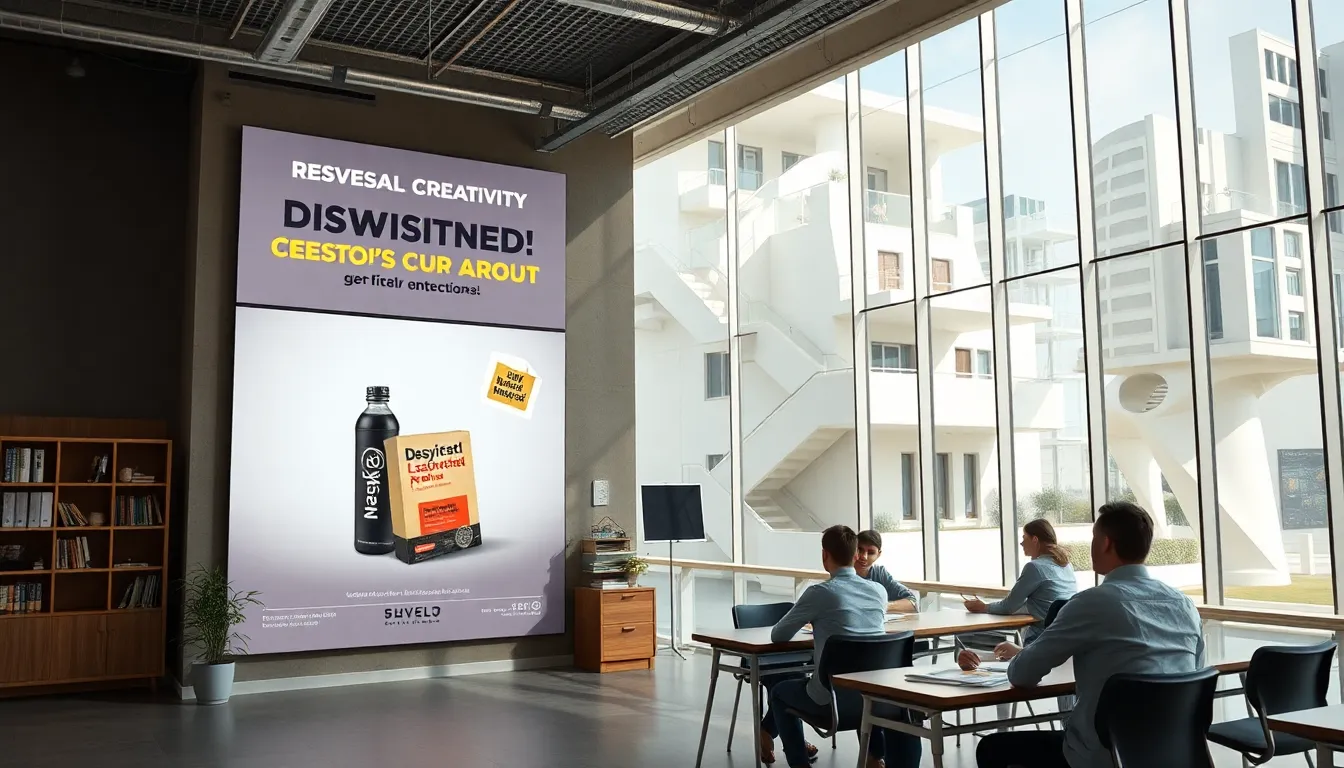Table of Contents
ToggleEver wondered how some people can turn the mundane into the extraordinary? Enter the world of reversal creativity, where thinking backwards leads to groundbreaking ideas. It’s like finding a hidden treasure in your sock drawer—unexpected yet delightful. This unique approach flips conventional wisdom on its head, challenging the norm and inviting fresh perspectives.
Imagine taking a problem and asking, “What if I did the opposite?” It’s not just a quirky thought experiment; it’s a powerful tool that can spark innovation and inspire creativity in ways you never thought possible. Whether you’re a seasoned professional or just looking to spice up your brainstorming sessions, embracing reversal creativity might be the game-changer you need. So buckle up and get ready to explore a playful yet profound method that’ll have you seeing the world—and your problems—through a whole new lens.
Understanding Reversal Creativity
Reversal creativity stimulates innovative thinking by prompting individuals to challenge standard assumptions. This method encourages exploration of opposite perspectives, leading to more effective solutions.
Definition of Reversal Creativity
Reversal creativity involves thinking about problems from the end goal backwards. This strategy encourages individuals to identify what not to do, highlighting potential pitfalls. By reversing conventional methods, it opens pathways to unexpected insights. This approach benefits diverse fields such as marketing, design, and problem-solving.
Importance in Creative Processes
Reversal creativity plays a crucial role in enhancing creative processes. It fosters originality by breaking established thought patterns. Teams utilizing this technique often discover novel solutions that standard brainstorming overlooks. Embracing reversal creativity leads to a dynamic exchange of ideas, ultimately enriching collaboration. Many organizations report increased innovation following the adoption of this method.
Examples of Reversal Creativity

Reversal creativity manifests in diverse applications, showcasing its impact across various sectors.
Case Studies in Various Fields
In marketing, a well-known campaign reversed traditional approaches. Rather than highlighting a product’s benefits, it focused on the potential downsides. This strategy led to increased engagement and consumer awareness. In architecture, designers often consider unconventional layouts that challenge the norms of space utilization. A notable example involved a structure that prioritized movement patterns rather than standard functionality, resulting in innovative use. Finally, in education, instructors have redefined lessons by posing questions that ask students to argue the opposite of accepted answers. This technique cultivates critical thinking and enhances comprehension.
Famous Personalities Who Embrace Reversal Creativity
Numerous influential figures leverage reversal creativity in their work. Steve Jobs often considered failures as opportunities for growth, leading to breakthroughs in technology. His perspective encouraged teams to innovate rather than conform. Similarly, Isaac Asimov posed unexpected scenarios in his science fiction, prompting readers to explore alternative futures. This imaginative method inspires creative thinking in the genre. Additionally, Pablo Picasso challenged conventional artistic forms, leading to the development of Cubism. His willingness to deconstruct reality reshaped visual art and continues to influence modern artists.
Techniques to Enhance Reversal Creativity
Reversal creativity can be enhanced through practical techniques that encourage innovative thought processes.
Brainstorming Methods
Diverse brainstorming methods play a key role in fostering reversal creativity. One effective approach involves encouraging participants to generate ideas that focus on failures instead of successes. By identifying what could go wrong, teams can discover hidden insights. Another method is to assign roles that require individuals to defend opposing viewpoints, helping to break established thought patterns. Facilitating group discussions where team members challenge each other’s ideas sparks fresh perspectives. Incorporating tools like mind mapping and reverse lists allows participants to visualize the problem from different angles. These varied methods stimulate collaborative environments, leading to richer and more creative outputs.
Role of Constraints in Reversal Creativity
Constraints significantly impact reversal creativity by shaping innovative solutions. When individuals operate within specific limitations, they often think outside the box. Imposing rules can drive creativity by forcing teams to explore alternatives they wouldn’t typically consider. For instance, restricting time during brainstorming sessions prompts quick thinking and sharpens focus. Size limitations on products may lead to innovative designs that prioritize functionality. Constraints may also include budget limits, challenging teams to create cost-effective solutions. Embracing these limitations can transform obstacles into bridges for creative thinking, enhancing originality and effectiveness in problem-solving.
Applications of Reversal Creativity
Reversal creativity finds application across various fields, significantly influencing business and arts.
In Business and Innovation
Reversal creativity reshapes business strategies by prompting unconventional thinking. Marketing teams may begin with potential downsides, driving engagement through unexpected narratives. Consider how a campaign could focus on drawbacks instead of traditional benefits. This tactic inspires consumers to reflect on their choices, fostering loyalty. Product development often benefits from this approach, identifying what not to include, which helps refine offerings. Companies that adopt this mindset typically observe greater innovation, challenging assumptions that limit growth. Transformative solutions emerge when teams embrace reversed perspectives during problem-solving sessions.
In Art and Design
Art and design thrive on the principles of reversal creativity, presenting rich opportunities for innovation. Artists, for instance, redefine concepts by deconstructing established norms, allowing for unconventional expressions. A designer might prioritize movement patterns over conventional functionality, creating more dynamic spaces. Works like Cubism exemplify such creativity, pushing boundaries and encouraging audiences to see the familiar in new ways. Furthermore, the process of reversing traditional aesthetics leads to striking visual narratives. Projects that embrace this approach often result in groundbreaking designs that captivate the imagination. Enhanced appreciation for diverse viewpoints enriches both artistic expression and design processes.
Reversal creativity stands as a powerful tool for unlocking innovative potential. By encouraging individuals to think backwards and challenge established norms, it fosters a culture of originality and critical thinking. This approach not only enhances problem-solving capabilities but also leads to unexpected insights across various fields.
Embracing reversal creativity allows teams to navigate challenges more effectively and discover solutions that traditional methods might overlook. As organizations and individuals adopt this mindset, they position themselves to thrive in an ever-evolving landscape. Ultimately, reversal creativity transforms how challenges are perceived, paving the way for fresh ideas and groundbreaking innovations.




